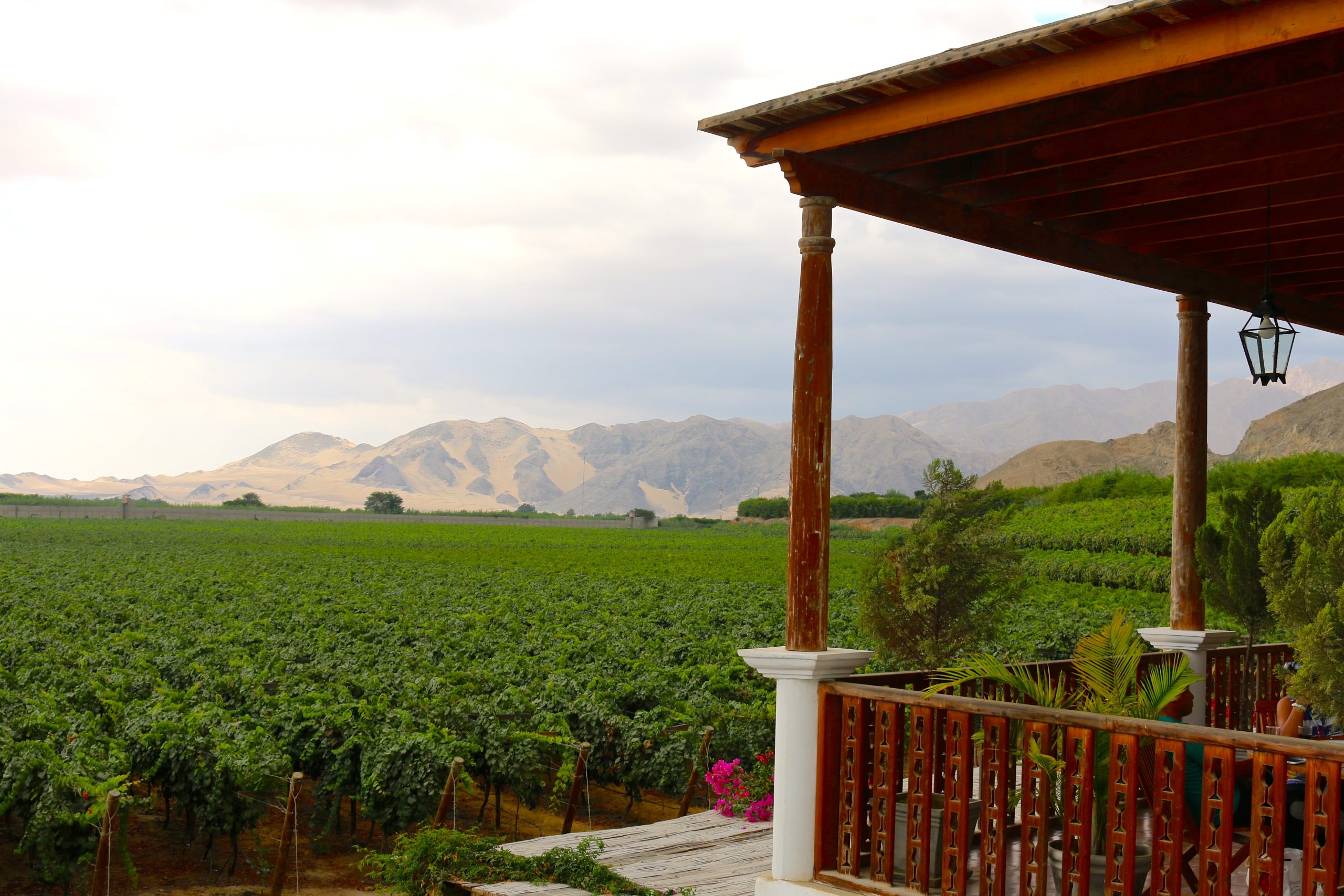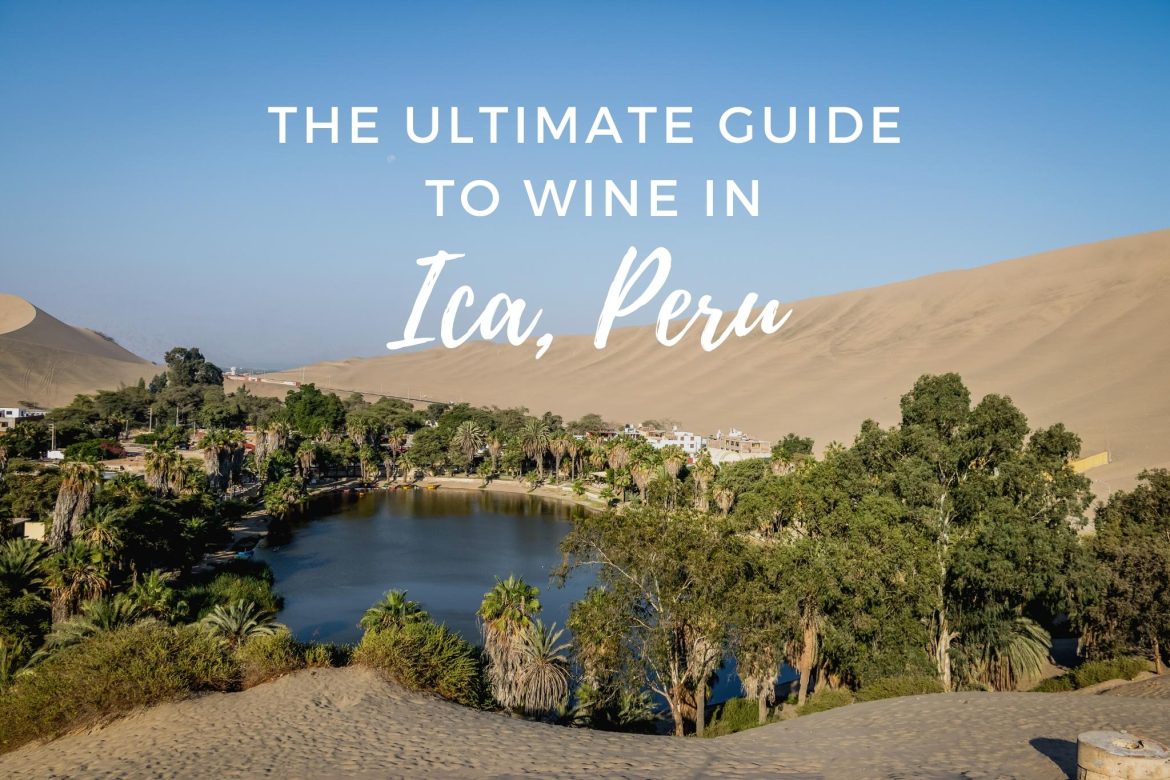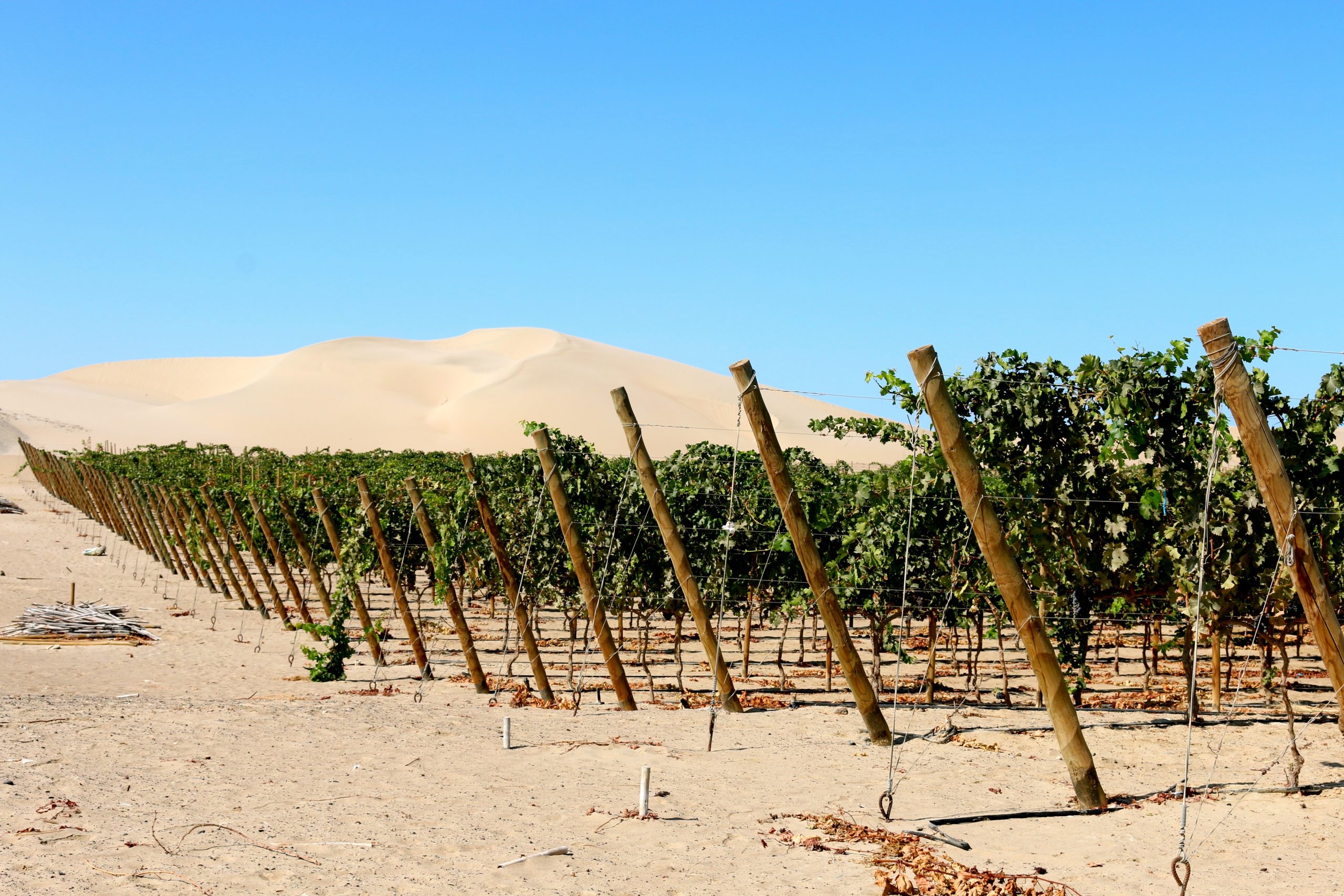Ica is Peru’s main wine region, first planted some 500 years ago. Here’s the ultimate guide to wine in Ica in Peru including wineries in Ica, sub-regions in Ica and what wines to drink from Ica.
Guide to Ica wine region in Peru
-
-
- Hectares planted: 5,500
- Producers: 10,000 + growers
- Avg. vineyard size: < 1 ha
- Sub-regions: Chincha, Ica, Nazca, Palpa, Pisco
- Altitude: 0 to 700 m.a.s.l.
-
Even though Ica is the heartland of Peruvian wine production, it is one of those off-the-beaten-track wine destinations. A sometimes lethal cocktail of fast-moving traffic and reckless stray dogs, combined with the litter lining on the roadside, mean it isn’t the prettiest destination to arrive at either. That being said, those who do make the four-hour journey there from Lima will be rewarded with an authentic experience in the heart of Peruvian wine country.
Visiting Ica in Peru
Ica can lay claim not just to the lion’s share of Peruvian production, but also to some of the oldest and longest established wineries in the New World. Tacama claims to be the oldest active vineyard in the New World, set up in the 1540s by Francisco de Carabantes. Its ginormous old wine press and hundreds of ceramic botijas are relics of the winery’s long history. Tacama is also one of Peru’s most visited wineries, with a popular restaurant overlooking the garden where a horse show and traditional marinera dance take place at weekends. Another winery which vies for the title of Peru’s most visited is Santiago Queirolo’s Intipalka winery, whose luxury hotel resort allures most of Ica’s wine tourists to stay overnight in the region.
Most of the vineyards in Ica are planted on the flatlands, hugging the riverbanks and irrigation channels — access to water is vital in this arid desert.
The dry, sunny climate and free-draining sandy soils with their ample water supply allowed viticulture to thrive and you’ll still find many hundred-year-old vines in a perfectly healthy condition. Over 10,000 grape-growing families produce grapes which they either sell to big Pisco producers or commercial wineries or else use for their own small-scale production of Pisco or wine.
Few of these small producers make wine for export, although modern boutique producers, such as Pepe Moquillaza and Matías Michelini’s Mimo project, are helping to bring natural, artisanal wines made from old-vine Criolla varieties into the limelight. There is also renewed interest in these varieties from new producers in the area, including Bodega Murga’s exciting project, which is planting new vines on the banks of the river Pisco.
The work being done to make wines from the Criolla and Pisco varieties may be small in scale but it is nonetheless important, as it offers a more promising future for the myriad of old vines that still exist in Ica, which has Peru’s most diverse range of these historic varieties.
The majority of the wine from Ica that you’ll find in the market is, however, made from international varieties, such as Cabernet Sauvignon and Sauvignon Blanc. No single star variety has emerged as yet from Ica’s international grape varieties, but I feel that the thick-skinned red varieties (Tannat, Petit Verdot, Ancellotta) perform best under the hot sun and there are a few reasonably convincing international white varieties (Sauvignon Blanc, Chenin Blanc) that are showing promising results.
Ica has a long history of wine production, but it is still finding its direction for the future. And as Peru’s principal wine region, all eyes are on it. There’s no doubt that whatever direction it eventually takes, Peru’s other wine regions will follow suit.
Sub-regions of Ica
Chincha
Ica’s northernmost province is Chincha, which is the second smallest in size. Production in Chincha is focused on Pisco, although the region also produces some semi-sweet wines that are sold domestically. Chincha is coastal in influence with mainly sandy-loam soils.
Notable producers: Finca Rotondo, Viñas de Oro
Pisco
Pisco’s soils are alluvial, and most of the vineyards are located on the old riverbed, which has a mix of sand, clay and pebbles. In general, Pisco is cooler and windier than Ica, but has lower thermal amplitude. The valley has vineyards running up to around 500 m.a.s.l., but the majority are closer to 300 m.a.s.l., and the climate has a significant coastal influence, making wines with marked salinity.
Notable producers: Bodega Murga
Ica
This is the largest and most central province within the region of Ica and it is also the heart of Peruvian wine and Pisco production. Ica has a large spread of vineyards that run from higher-elevation plots with rockier soils near the riverbeds down to the sandiest of sites nestling between the sand dunes close to the coast. This area has a desert climate (clear skies mean warm, sunny days and cool nights) but the temperatures are moderated by the maritime influence. Pisco varieties are planted widely in Ica, as they are all over Peru, but this sub-region is also home to Peru’s most significant plantings of international varieties. Here in Ica you’ll find the region’s biggest wineries, the country’s most important wine route, and the major tourist destination of Huacachina — a village and lagoon that together comprise a welcome oasis in the midst of the parched desert.
Notable producers: Finca 314, Intipalka/Santiago Queirolo, Mimo, Pachawines, Tacama, Vino de Arenas, Vista Alegre
Palpa
The smallest of Ica’s provinces is landlocked, starting some 50 km from the coast. Palpa is home to just a few vineyards. The hot temperatures, very dry climate and rocky, sandy soils make it most suitable for red wine production — most notably Syrah.
Notable producers: Saint Lizier
Nazca
One of the most famous places in Peru, the terroir of the province of Nazca is renowned for its etchings rather than the wine it produces. Hundreds of lines and fascinating geoglyphs were created by the Nazca culture between 1,500 and 2,500 years ago and are one of Peru’s greatest tourist attractions today. While these lines clearly pre-date the vineyards in Nazca by a wide margin, the region nevertheless has a wine history spanning almost 500 years and there are many ruins of old wineries alongside abandoned churches and some surviving old vines to be discovered. Most grape production in Nazca today is used to make Pisco and wine sold locally.

Wineries in Ica
BODEGA MURGA
Bodega Murga is a new natural wine and artisanal Pisco producer on the river terraces of Pisco. The winery has achieved a promising first vintage of Criolla varieties, including some characterful orange wines.
FINCA 314
This family winery has been run by the women of the family ever since its foundation in 1821. While Pisco continues to be their main source of income, the ladies also launched a series of artisanal wines a few years ago.
INTIPALKA
Also known as Santiago Queirolo winery (or Viñas Queirolo), Intipalka is a modern producer with a wide portfolio of international grape varieties. It also has an important winery hotel and restaurant.
MIMO
Pisco producer Pepe Moquillaza and Argentine winemaker Matías Michelini shook things up with their inaugural vintage of natural wines from old Criolla vines in 2016. Mimo’s unfiltered, orange and characterful wines have helped to redefine Peru’s modern-day quest for a wine identity.
Read about Matías Michelini- Mendoza’s man for mountain Sauvignon Blanc.
PACHAWINES
Pachawines is a promising project by renowned Chilean winemaker Claudio Barría who works with small, organic producers across Peru to make a terroir series of Criolla wines.
PAMPAS DE ICA
Pampas de Ica is a Pisco producer making a small collection of easy-to-drink, aromatic Criolla wines.
TACAMA
Tacama is one of the New World’s oldest active vineyards and wineries- established circa 1540. Today, Tacama is one of the best wineries to visit in Peru and one of Peru’s biggest exporters.
VISTA ALEGRE
Vista Alegre is a large and historic winery established in 1857. Their rich Picasso Don Jorge Ancellota has to be our top pick from the Vista Alegre portfolio.
VIÑAS DE ORO
Bodega Viñas de Oro began producing Pisco in 1993 before building their modern bodega which can produce up to 200,000 litres of Pisco! Of particular interest to Pisco lovers is their Brandy Limited Edition which is aged in oak barrels and kept for 5 years.
BODEGA VIÑA VIEJA
Bodega Viña Vieja (Finca Rotondo) is a wine and Pisco producer in Chincha which was founded over 200 years ago and continues to expand its production.
 Want to know more about Ica
Want to know more about Ica
and other wine regions in Peru?
Get your copy of the PERU WINE GUIDE E-BOOK!
Find out more about Peru
- The diversity of Peruvian wine and Peru’s grape varieties
- A guide to Ica, the heart of wine from Peru
- 7 dishes to try in Peru: A guide to Peruvian cuisine
- Winelover’s guide to Lima: Best restaurants and bars in Lima
- South America wine production (in figures): Argentina, Chile, Uruguay, Brazil, Bolivia & Peru


